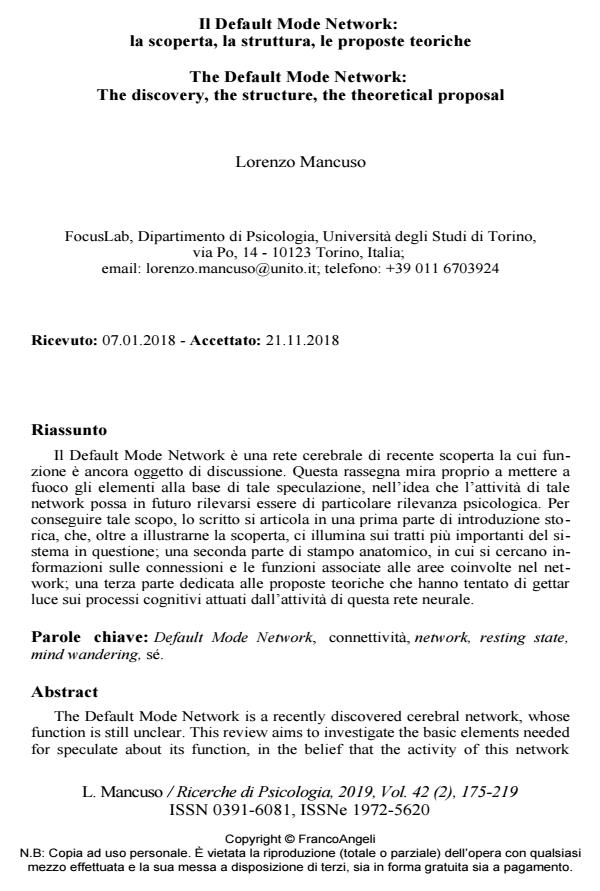The Default Mode Network: The discovery, the structure, the theoretical proposal
Journal title RICERCHE DI PSICOLOGIA
Author/s Lorenzo Mancuso
Publishing Year 2019 Issue 2019/2
Language Italian Pages 45 P. 175-219 File size 472 KB
DOI 10.3280/RIP2019-002001
DOI is like a bar code for intellectual property: to have more infomation
click here
Below, you can see the article first page
If you want to buy this article in PDF format, you can do it, following the instructions to buy download credits

FrancoAngeli is member of Publishers International Linking Association, Inc (PILA), a not-for-profit association which run the CrossRef service enabling links to and from online scholarly content.
The Default Mode Network is a recently discovered cerebral network, whosepfunction is still unclear. This review aims to investigate the basic elements neededpfor speculate about its function, in the belief that the activity of this network could prove to be of psychological relevance. To do so, this paper is divided intopa first historical section which will clarify the most important aspects of the system;pa second anatomical section, dealing with connections and functions associatedpwith the brain areas of the network; a third theoretical section, dedicated topthe hypotheses made to explain the cognitive process implemented by this network.p
Keywords: Default Mode Network, connectivity, network, resting state, mindpwandering, self.p
Lorenzo Mancuso, Il Default Mode Network: la scoperta, la struttura, le proposte teoriche in "RICERCHE DI PSICOLOGIA " 2/2019, pp 175-219, DOI: 10.3280/RIP2019-002001